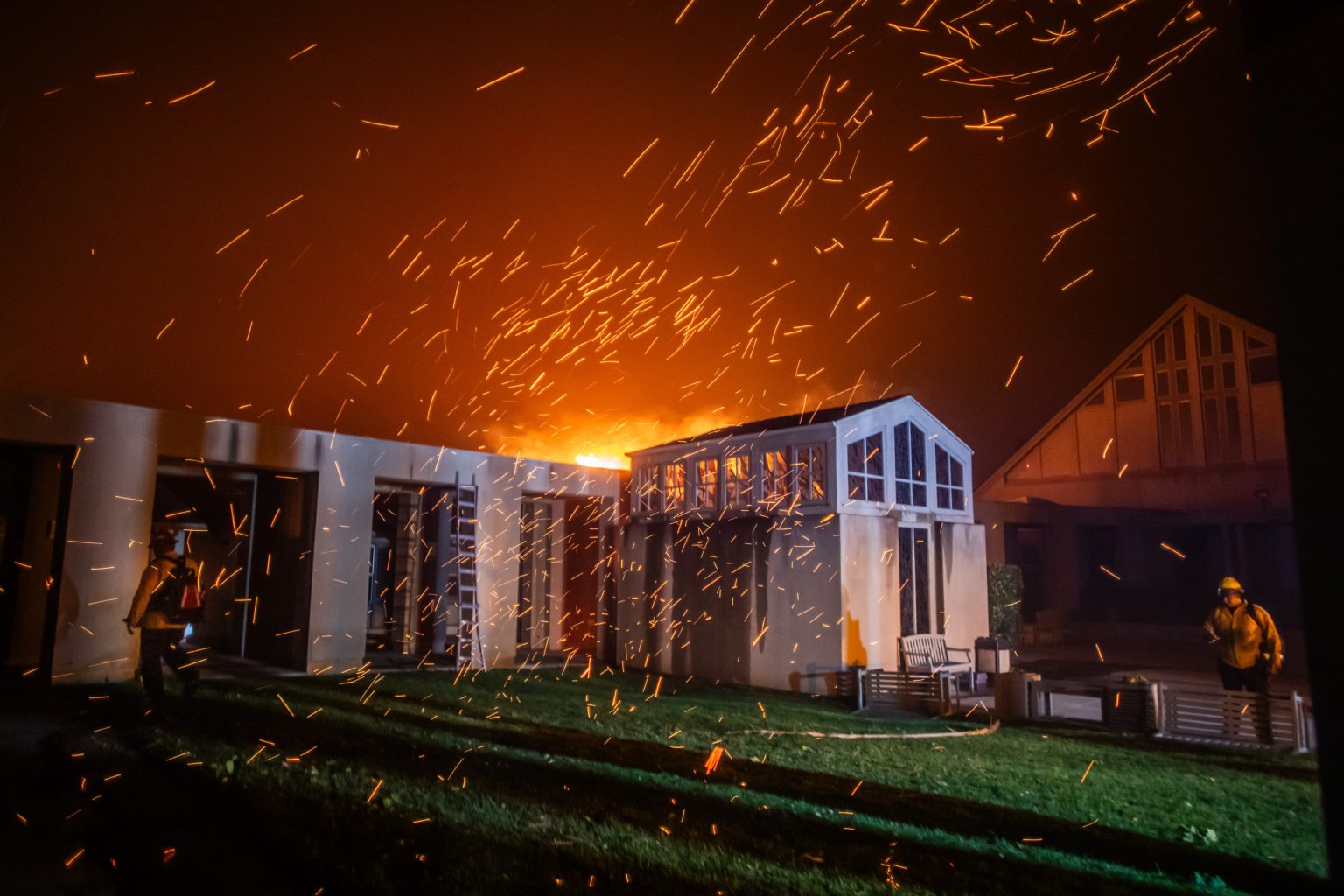The city of Los Angeles is currently grappling with a trifecta of rapidly spreading wildfires, forcing widespread evacuations and wreaking havoc across multiple neighborhoods. The largest of these, the Palisades Fire, ignited on Tuesday morning in the affluent Pacific Palisades neighborhood, nestled between Malibu and Santa Monica. Consuming nearly 3,000 acres by Wednesday morning, this inferno prompted the evacuation of approximately 30,000 residents. Adding to the city’s woes, two additional blazes erupted later on Tuesday. The Eaton Fire, situated in the hills above Altadena, has scorched over 1,000 acres, necessitating evacuations in parts of Altadena and Pasadena. Simultaneously, the Hurst Fire, engulfing at least 500 acres in the San Fernando Valley, triggered evacuation orders for sections of that area. These concurrent emergencies have stretched firefighting resources thin and painted a grim picture for the affected communities.
The origins of both the Palisades and Hurst fires remain under investigation, highlighting the complexities of wildfire causation. The Palisades Fire began around 10:30 a.m. local time on Tuesday, its smoke plume visible for miles across the city. The Hurst Fire, emerging later that evening near Diamond Road in Sylmar, spread with alarming speed, underscoring the volatile conditions fueled by dry vegetation and strong winds. While investigators work to pinpoint the exact causes, the prevailing dry conditions and predicted continuation of strong winds raise concerns about the potential for further fire growth and the challenges firefighters will face in containing the existing blazes. Los Angeles Mayor Karen Bass has declared a state of emergency, acknowledging the severity of the situation and mobilizing resources to combat the fires and assist displaced residents.
The geographic locations of these fires present unique challenges for firefighting efforts. The Palisades Fire, situated in a densely populated area with challenging terrain, poses a significant threat to homes and infrastructure. The steep hillsides and dense vegetation contribute to the fire’s rapid spread and make access for firefighters difficult. Similarly, the Eaton Fire, burning in the hills above Altadena and Pasadena, threatens communities nestled in the foothills and presents its own set of logistical challenges for containment. The Hurst Fire, located in the more suburban San Fernando Valley, still carries the potential for significant damage due to the abundance of dry brush and the persistent winds. The varied topography and diverse landscapes of these affected areas necessitate adaptable strategies and resource allocation to effectively combat the flames.
California’s susceptibility to wildfires is a complex interplay of environmental factors. A combination of warmer temperatures, reduced rainfall, and decades of fire suppression policies have created a tinderbox-like landscape primed for ignition. The prolonged drought conditions desiccate vegetation, turning it into readily combustible fuel. Years of fire suppression, while intended to protect forests, have inadvertently led to an overgrowth of vegetation, creating an abundance of flammable material that intensifies fires when they do occur. This accumulation of dry underbrush and dense forests provides ample fuel for wildfires to grow rapidly and burn with greater intensity.
The influence of climate change on California’s wildfire landscape is undeniable. Rising temperatures exacerbate drought conditions, further drying out vegetation and creating a more flammable environment. The hotter and drier conditions also extend the fire season, increasing the window of vulnerability for wildfires to ignite and spread. The past decade has witnessed a dramatic increase in the number and severity of wildfires in California, with fifteen of the state’s twenty most destructive fires occurring within this timeframe. This trend points to the escalating impact of climate change on the state’s fire regime and emphasizes the need for proactive measures to mitigate future risks.
The increasing frequency and intensity of wildfires underscore the urgent need for comprehensive strategies to address this growing threat. These strategies must encompass both immediate responses to active fires and long-term preventative measures to reduce the risk of future outbreaks. Improved forest management practices, including controlled burns and selective thinning, can help reduce the amount of flammable material in forests. Strengthening infrastructure, such as power lines and building codes, can minimize the risk of human-caused ignitions and increase community resilience to wildfire events. Furthermore, addressing the underlying causes of climate change is crucial to mitigating the long-term risks associated with wildfires and protecting California’s vulnerable landscapes. A multi-faceted approach that combines immediate response, preventative measures, and long-term climate action is essential to effectively combat the increasing threat of wildfires in the state.

